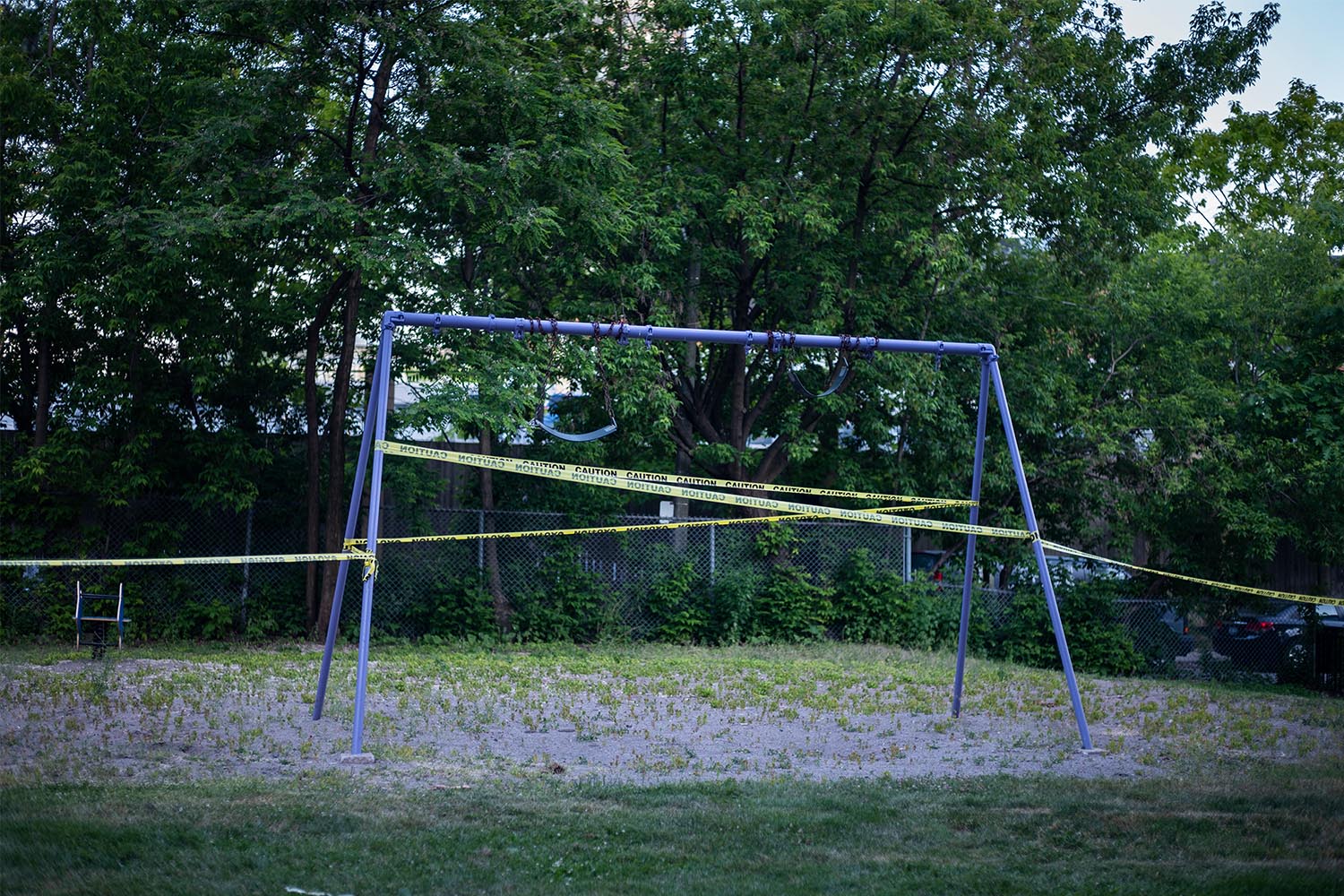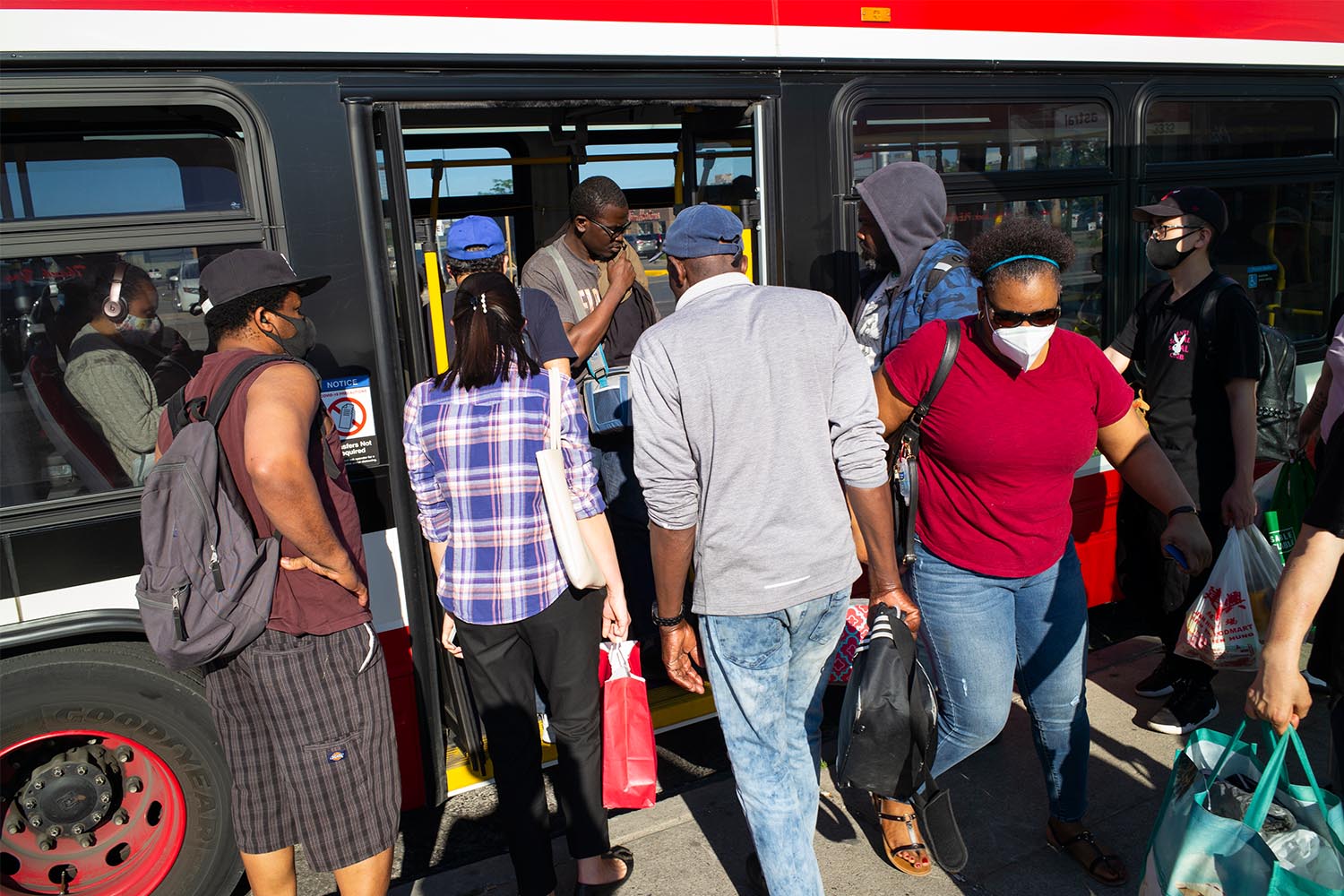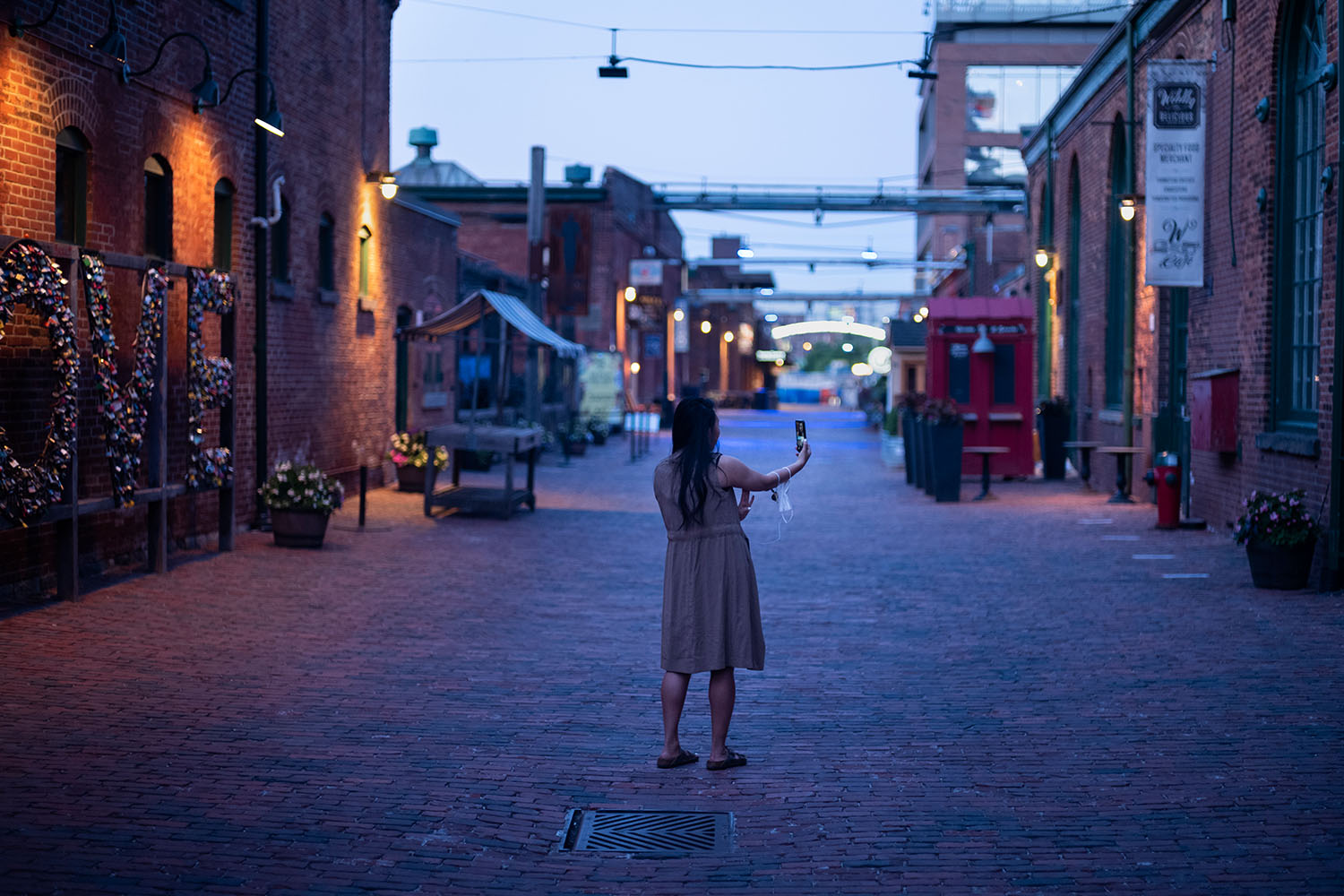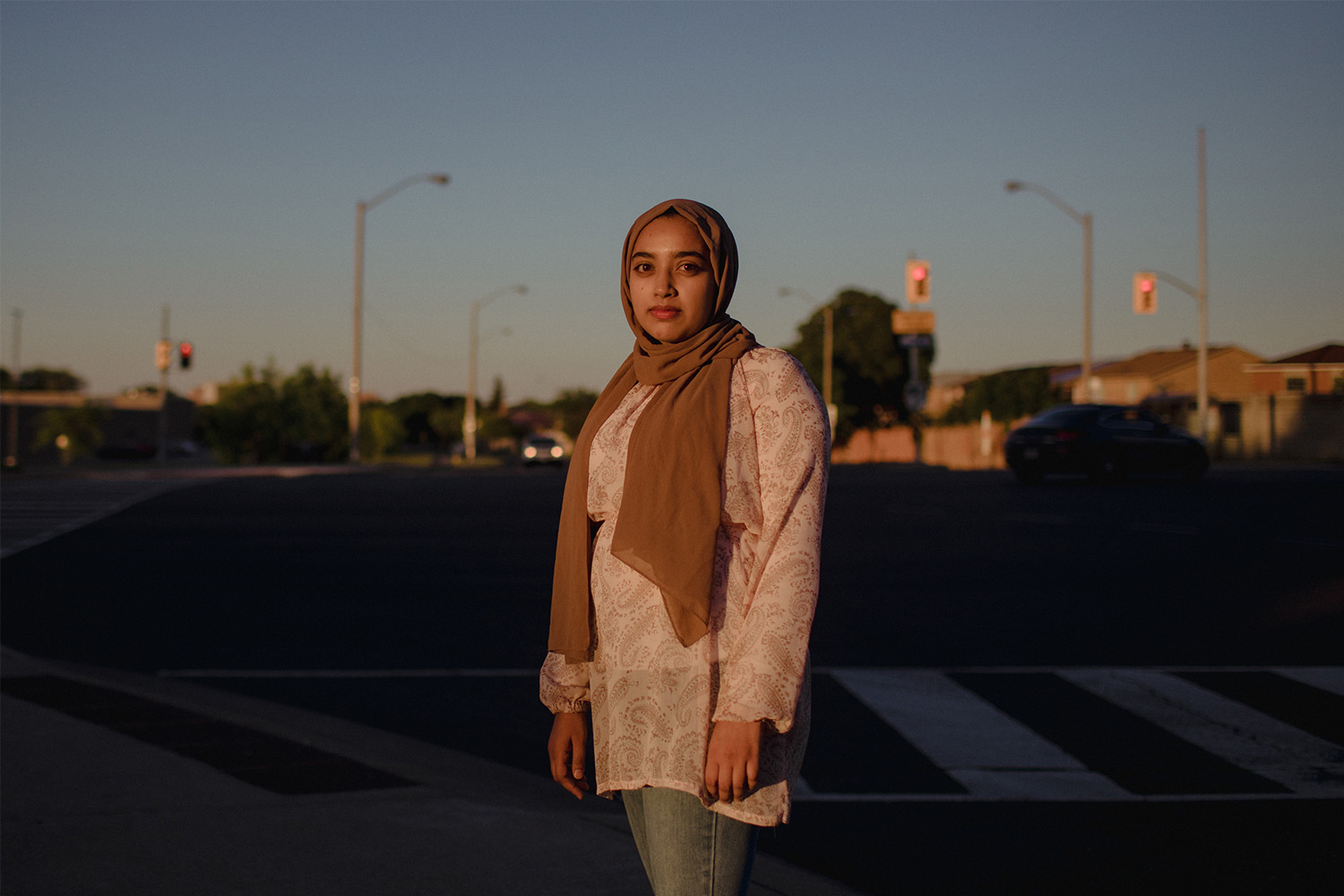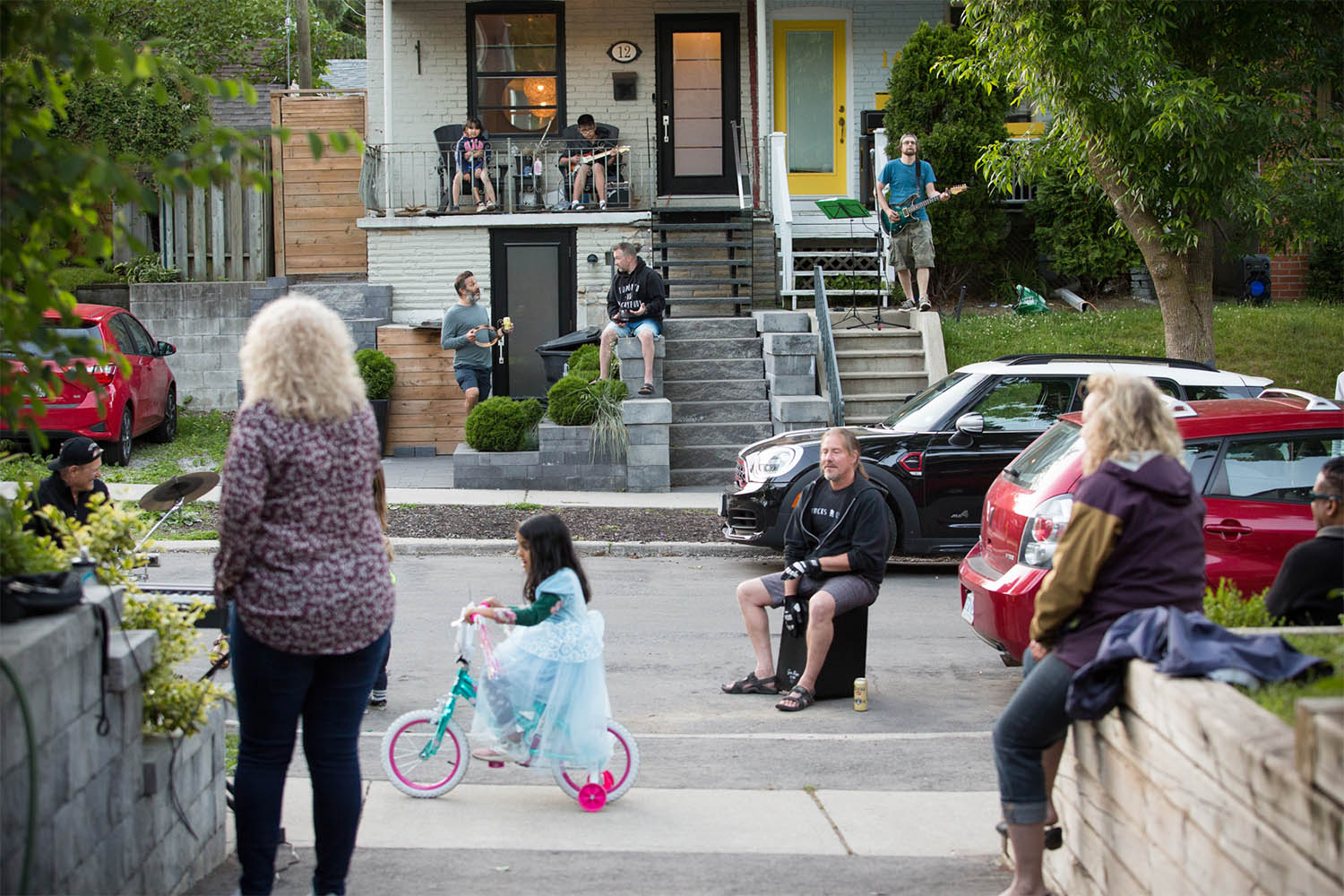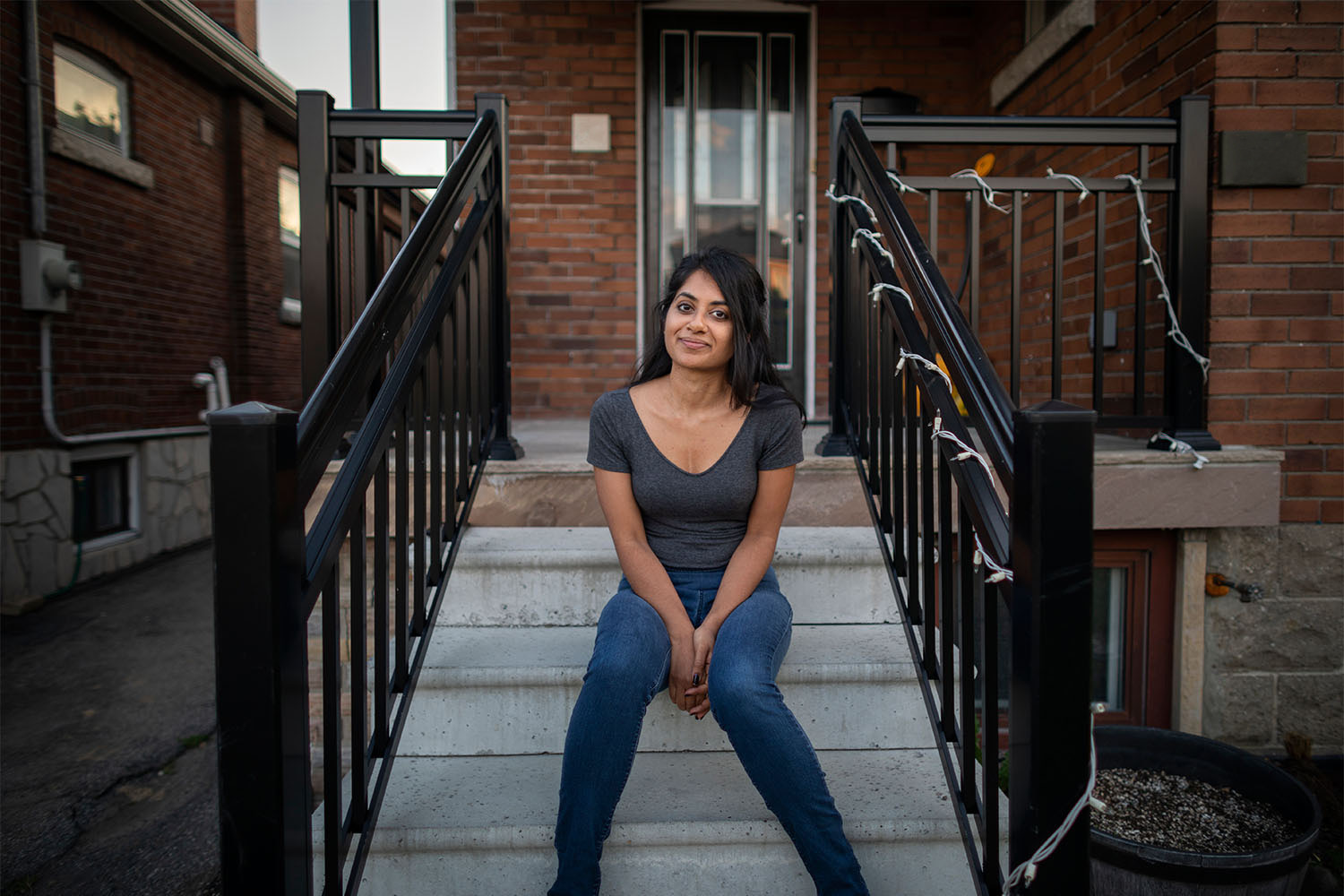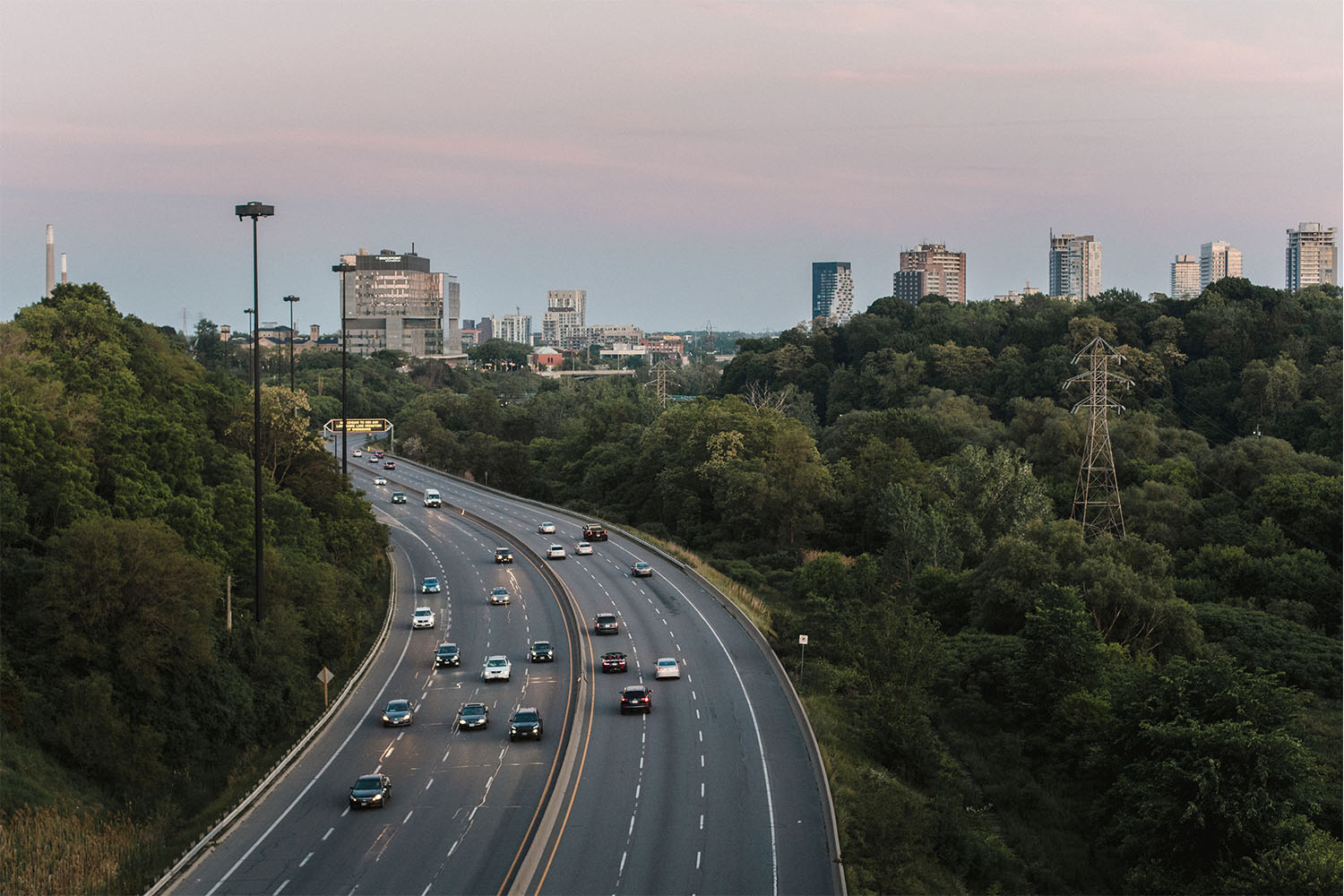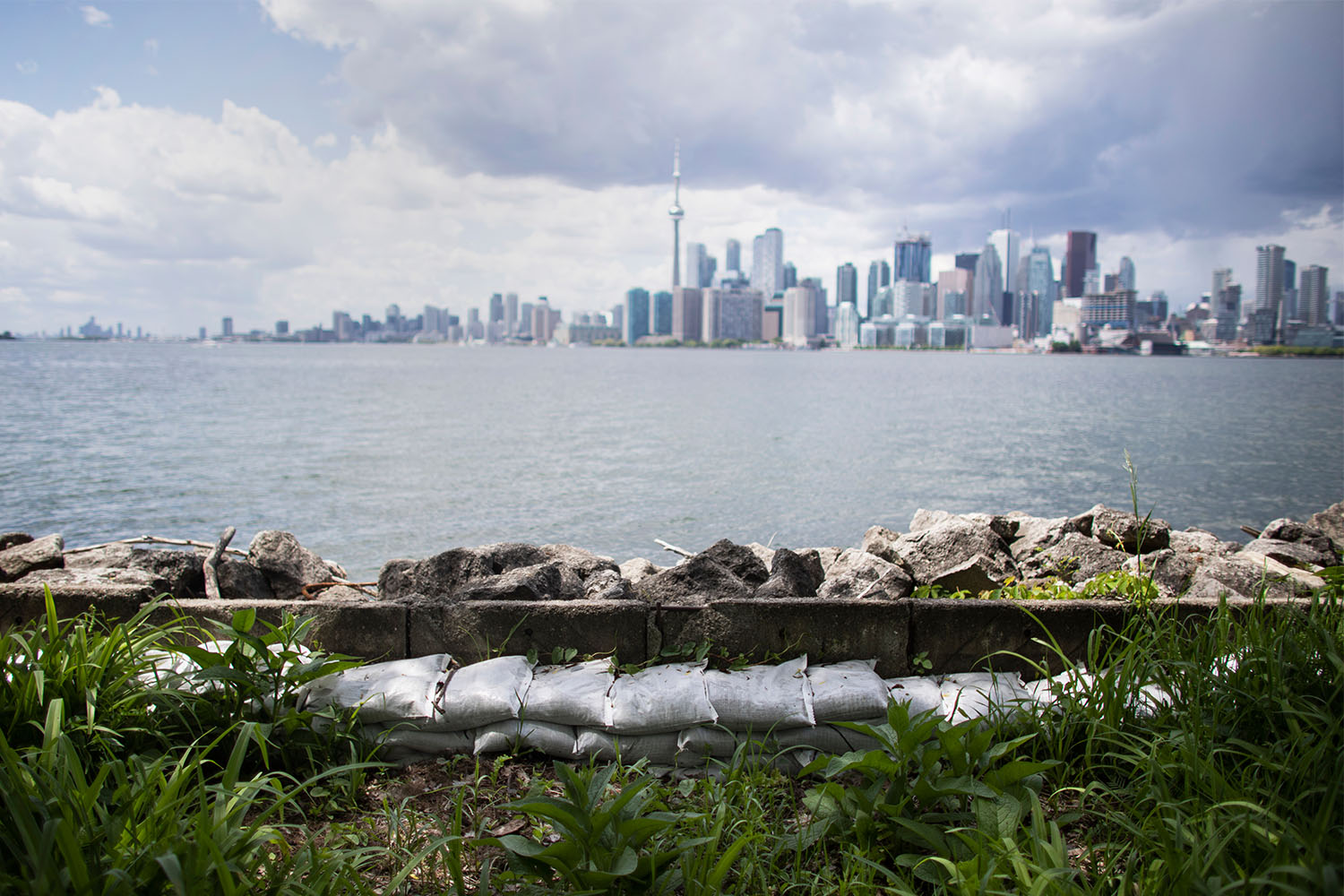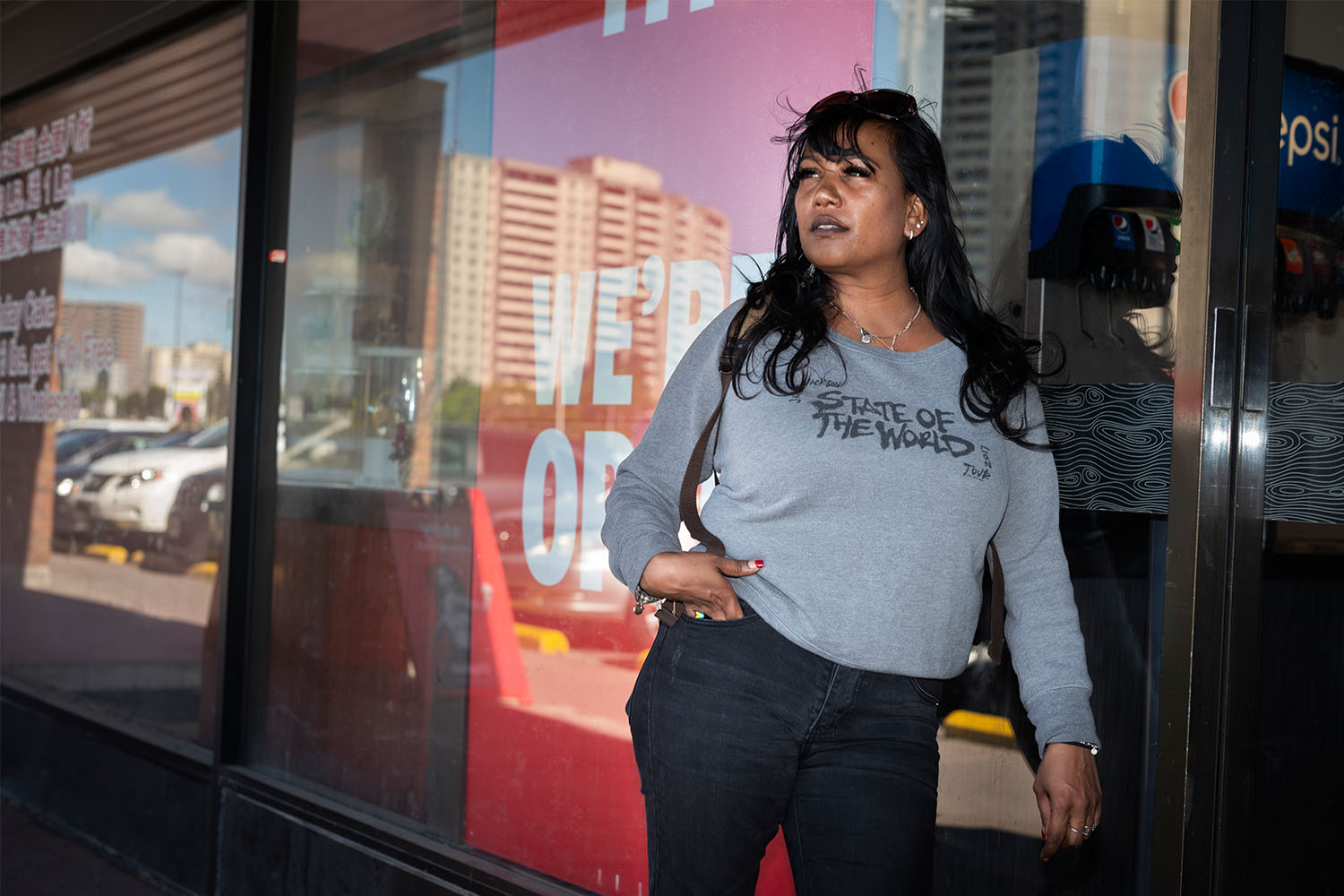
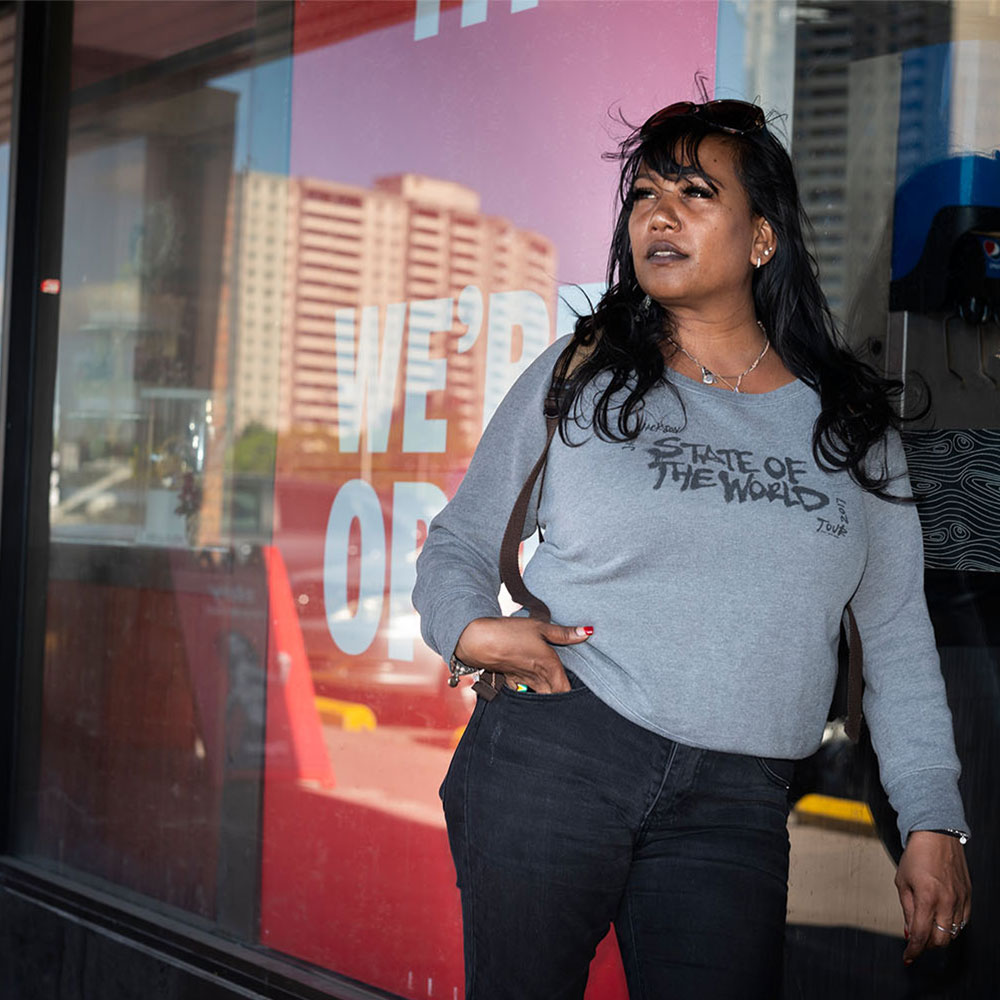
Before COVID, the parking lot at the Jane Finch Mall on the south-east corner of Jane Street and Finch Avenue West was a hive of activity—a steady stream of workers and students flowing through it on their way across the city.
People waited at the two adjacent bus stops to get on the overcrowded 35 Jane or the 36 Finch West buses, crisscrossing the longitudes and latitudes of the city to get to class or to head to work as cleaners, personal support workers or security guards. Others would park their minivans—ladders loaded on roof racks and trunks filled with tools of their trade—to grab cups of coffee before picking up coworkers and heading onward to construction sites. Temporary foreign workers would assemble between 5:30 and 7:00 a.m. to be taken to work on a farm or a factory, ferried on a minibus or school bus.
On an early Tuesday morning, three months into a global pandemic, the parking lot is calm and almost empty. A handful of people stand outside the FreshCo, waiting for the grocery store to open at 7:00 a.m. A store employee drags a metal dustpan across the asphalt, its grating rumble punctuating the low hum of street sound as he flicks cigarette stubs with a broom into the contraption’s recess.
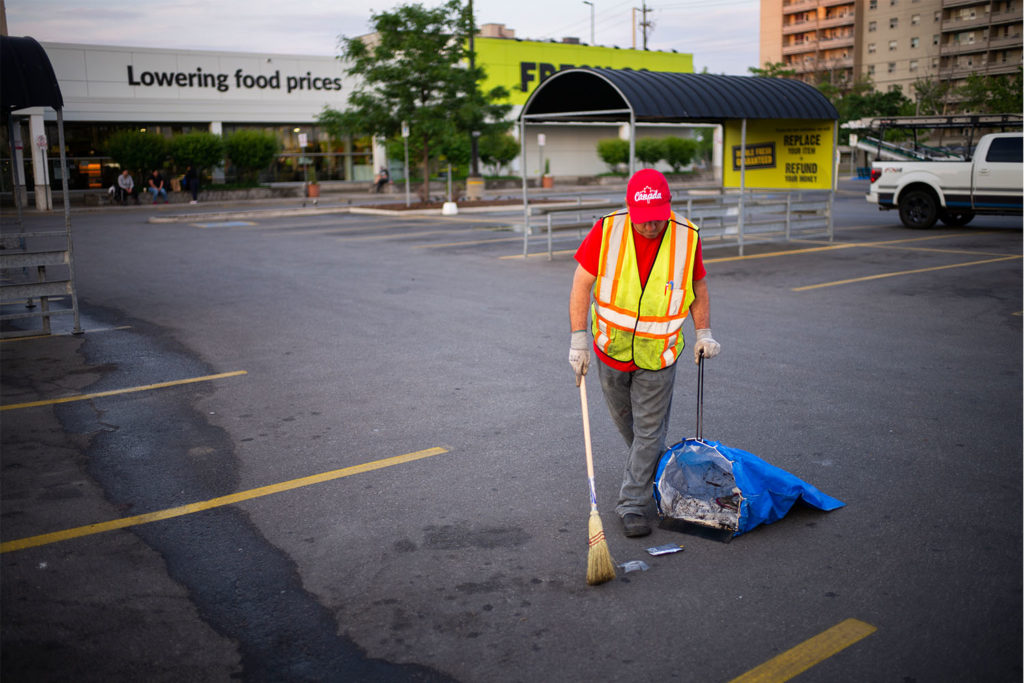
As the minutes tick by, a swell of people flows into the parking lot. Many of them are wearing masks, some have also donned clear or blue latex gloves, while others choose to remain uncovered. A physically distanced line-up builds outside the Tim Hortons, snatches of conversations in Tagalog, Spanish, and Caribbean Patois lingering in the air. While the 35 and 36 aren’t as packed as usual, from the growing line it’s clear the buses will hold far more than fifteen passengers per vehicle, the goal the TTC has set for itself. This working class neighbourhood made up of predominantly immigrants and racialized people cannot afford the luxury of staying at home—even as the Ontario government has extended all COVID-19 related emergency orders until the end of June.
Last month the City of Toronto released data that detailed the geographic spread of the novel coronavirus across the city. The highest concentration of COVID-19 was in a swath of the city in northwest Toronto. Glenfield-Jane Heights, a neighbourhood that spans from Finch Avenue West to Sheppard and Highway 400 to Keele Street, recorded the highest number of cases as of June 20.
The data matched expert opinion that COVID-19 disproportionately affects neighbourhoods with primarily Black, racialized and new immigrant populations. The city’s medical officer Dr. Eileen de Villa also acknowledged that income, access to housing, and employment are key determinants in neighbourhoods that show higher case numbers.
For the people who call this neighbourhood home, none of this is news.
Glenfield-Jane Heights is one of 31 Neighbourhood Improvement Areas designated by the city. According to a 2016 city profile, more than half of the residents have a mother tongue other than English, and almost 9 percent have no knowledge of English. People in this neighbourhood can trace their roots to Vietnam, Italy, Mexico, El Salvador, Guyana, and Jamaica, with more recent arrivals from the Philippines and Nigeria. Almost 60 percent of residents describe themselves as immigrants, and 77 percent as visible minorities.
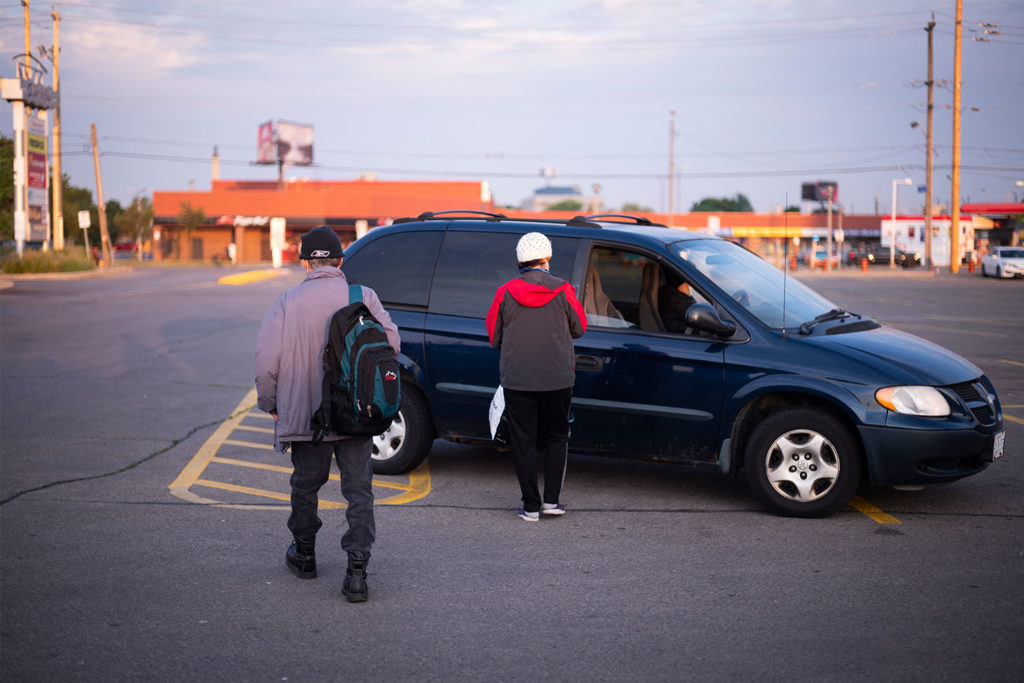
“The experience of the virus in Jane and Finch is just an extension of the daily experience of living in Jane and Finch,” says Sam Tecle, 36, a PhD candidate in sociology at York University who grew up in a highrise apartment building off of Finch Avenue West. “Housing here is very tight, very cramped. People are employed in precarious work environments. Black women in my own family work as personal support workers, who have to work in multiple places to be able to stitch together an income that barely covers the bills.”
Local agencies already active in the community quickly adapted their limited resources to try to meet the new needs of an already vulnerable population. But Tecle says that with work ranging from “retail staff at Tim Hortons, unit aides at hospitals, UPS workers or [temporary workers at factories]” the majority of residents are unable to stay at home. It’s no wonder that Glenfield-Jane Heights is one of the hotspots for COVID-19 in the city, he says. “It’s a prime place for the virus to proliferate.”
Before March, when news first started trickling in about a global pandemic across the world, COVID-19 seemed like a distant problem that couldn’t intrude on their tight-knit community says Suzanne Narain, a supply teacher and a resident member of the Jane Finch Action Against Poverty organization.
Even as headlines about people hoarding toilet paper and hand sanitizer started to dominate the news, it still felt far away. “As things started to shut down, social isolation became more active, but essential workers had to work,” she says. It quickly became clear that those who were living in marginalized communities, like racialized frontline workers, were most affected. “It started to feel scary because our families and friends are essential workers.”
“First it was so far away. And then it was very, very close.”
Narain’s parents work as cleaners at a doctor’s office, and they kept working throughout the pandemic. “It was absolutely terrifying. They are in their sixties, the demographic to get sick easily. They were not given safety equipment at the beginning. There was no official public training. The messaging coming from [Toronto Public Health] was confusing: Don’t wear a mask. Wear a mask. Don’t wear gloves. Wear gloves. Wash hands. Don’t get close to people,” she says, the frustration and anxiousness building in her voice.
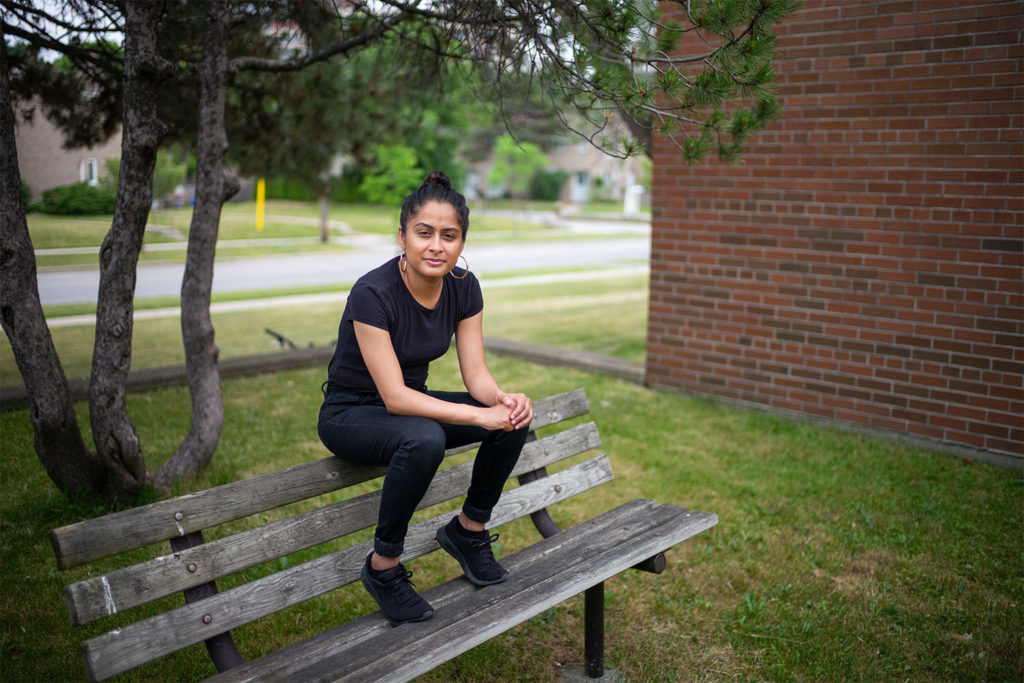
While Narain’s parents managed to avoid contracting the virus, Sue Brown, 47, wasn’t as lucky.That’s not her real name; she doesn’t want to use it because of the stigma attached to disease. “People don’t want to come near you,” says Brown. “They stereotype you, look down on you.”
Brown says she got the virus from her workplace, Hawthorne Place Care Centre, one of the five Ontario long-term care homes included in a military report that outlined horrific conditions at the facilities, ranging from abusive treatment of seniors to blatant disregard for infectious control measures. As of June 21, 48 residents had died at Hawthrone Place, and 105 staff members had gotten sick.
“Everything started from Hawthorne,” she says. Even though one of the residents had been diagnosed on March 30 with COVID-19, personal support workers were not given any personal protective equipment (PPE) until April 13, says Brown. “By that time five residents had died.”
After enduring a constant pain in her chest through much of March, Brown contacted her family doctor on April 13, and got a doctor’s note three days later and stopped going to work. When her health didn’t improve, she visited a hospital a week later but was sent home after routine tests such as a chest x-ray and blood work.
When the pain spread from her chest to her back and left hand, she went to the Humber River COVID-19 Assessment Centre on April 23. She got a positive COVID result two days later and immediately went into quarantine in her townhouse near Finch Avenue West and Keele Street. One of her daughters also contracted the virus and she sent the other daughter to stay at a family friend’s house. Her two sons managed to avoid catching COVID-19. They stayed in their own rooms, coming out only when necessary, with everyone constantly disinfecting the common spaces.
“At one point I thought I was going to die. You know how when you take a shower, and water gets in your face and you can’t breathe? I thought I was going to lose my breath,” she says. “I still have pain in my back and fingers. It’s not gone. It freaks you out, you know. You don’t know what’s going on, if this thing will come back.”
Brown has been coping with her recovery from COVID-19 by praying, taking long walks in the evenings, and talking to her neighbours. “I look at the houses on the street, the people going by. People doing their lawns. The flowers are blooming. It takes everything off your mind,” she says. “In Jane Finch, the community, we are supporting each other. If I hear about something, some initiative in the neighbourhood, I tell my next door neighbour, who tells her next door neighbour. That’s how we do it here.”
Now, she’s mentally preparing herself to return to work sometime in July. The money she’s been getting through the COVID-19 relief fund offered by the federal government just about covers her rent and other bills. “It’s tough for me to go back to work. I don’t know what’s going on there. But I have no choice,” she says.
While Brown was able to quarantine at home, many residents of the neighbourhood aren’t able to practice safe physical distancing, says Sabrina GoPaul, a resident member of Jane Finch Action Against Poverty and a community health worker at the Black Creek Community Health Centre. There are many intergenerational families living in close quarters in the apartment buildings. Stepping out of their apartment in a high-rise tower can become a source of unease, especially due to concerns over shared spaces such as elevators.
“I know about a woman who was working in a long-term care home who got sick. Her daughter, who works as a grocery store clerk also got sick. And there’s a granddaughter. The family finished their quarantine and are now back at work. People here can’t afford not to work, even though they are struggling with childcare,” she says.

Walking down from the intersection of Jane Street and Finch Avenue West to Firgrove Crescent on a recent Friday afternoon, GoPaul points out a series of housing options—from the market rent Palisades apartment building towering at the intersection to a townhome complex run by Toronto Community Housing further south. “On a summer afternoon, you’d hear music coming out of these backyards. This is after school time, so the playgrounds would be filled with children,” she says. She’s still not used to the quiet that’s taken over this community, where she’s been living since the early 80s.
Stopping by a food bank running out of one of the buildings at Firgrove Crescent, GoPaul checks in with the two women running the community-led operation. “There’s definitely been an increase in the number of people coming through,” says Hazel Reis, one of the volunteers, her voice warm and inflected with a patois lilt. “Maybe after this is over, I open my own catering company,” she adds, prompting laughter from GoPaul.
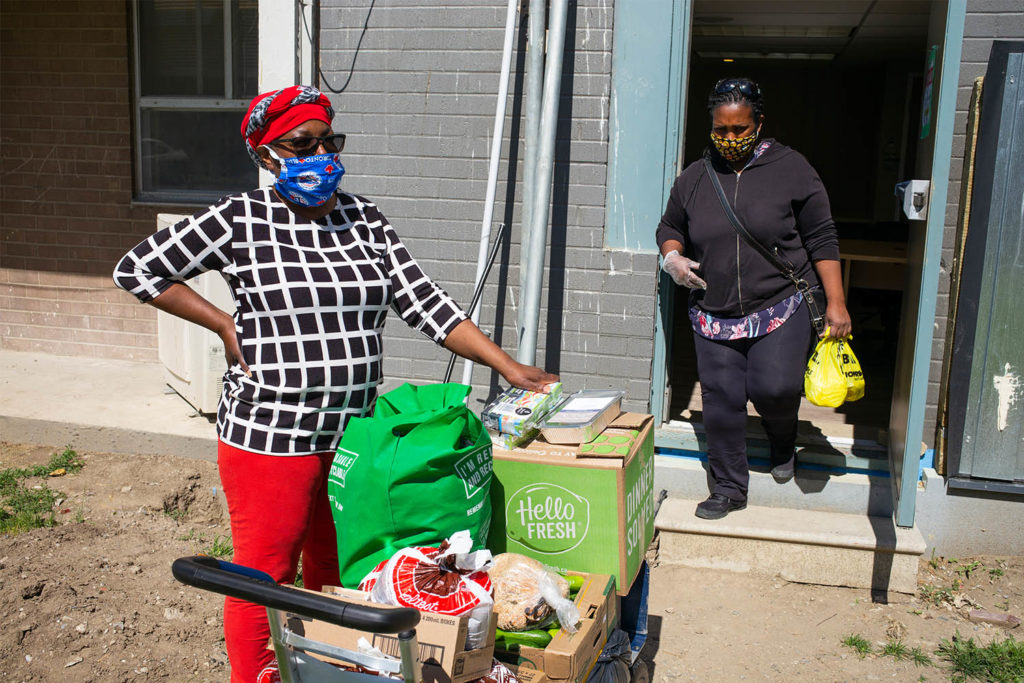
Besides prevailing issues such as food insecurity, lack of affordable housing, and precarious work, the situation has been compounded by other stay-at-home necessities. In an area that’s home to marginalized people, families lack basic resources such as access to computers at home or to the internet—all necessary for children to participate in school. Accessing government subsidies has been a challenge for a many immigrants or newcomers who aren’t fluent in English. “Then the government announces they will penalize people who were committing fraud. People became anxious—what if they filled out the forms incorrectly? Will they get in trouble?” says GoPaul.
Local agencies had already been working in the community to address domestic violence and mental health concerns prior to the pandemic. Those issues have also been exacerbated. Some of the ongoing revitalization projects that would have provided residents with better housing opportunities have also come to a standstill.
“Life is a little bit in limbo,” says GoPaul, pointing to a row of boarded up townhomes that are scheduled to be demolished.
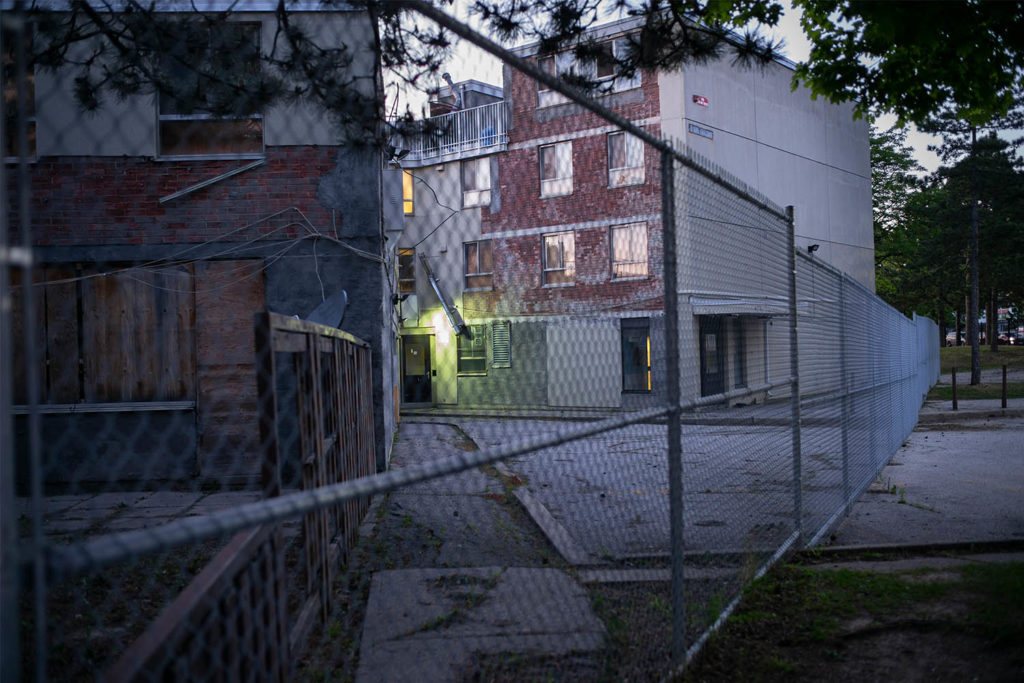
By Friday evening, the parking lot of the plaza at Jane Street and is bustling. At the Kien Hung Supermarket, two Black women dressed in bright African print dresses check the fruit punnets lined up on shelves outside the store while a Vietnamese couple look through a large cardboard box of ripe jackfruit. As they approach the store entrance, a masked and gloved employee points to a box of disposable masks.
As the city reopens, residents are still figuring out their new normal. Despite all the challenges of living and working in Jane and Finch, the community is resilient, says Cheryl Prescod, executive director of the Black Creek Community Health Centre. A former resident of Jane and Finch for 15 years, she’s well aware of the adversities faced by clients who come to the health centre, as well as the way local community organizations and resident-run initiatives come together in a time of crisis.
“As an organization we responded fairly quickly in the community. We deliver food, and have the luxury of seeing people in their home environments. Sometimes you can have a family of eight living in an apartment building unit,” says Prescod.
That dynamic, with so many family members locked up in close quarters, can cause its own problems. “We’re now in a place where we’re trying to think of the fall out,” she says. “What will we have to deal with once things start to open up, and go back to the so-called normal? There’s a lot of damage that needs to be undone.”
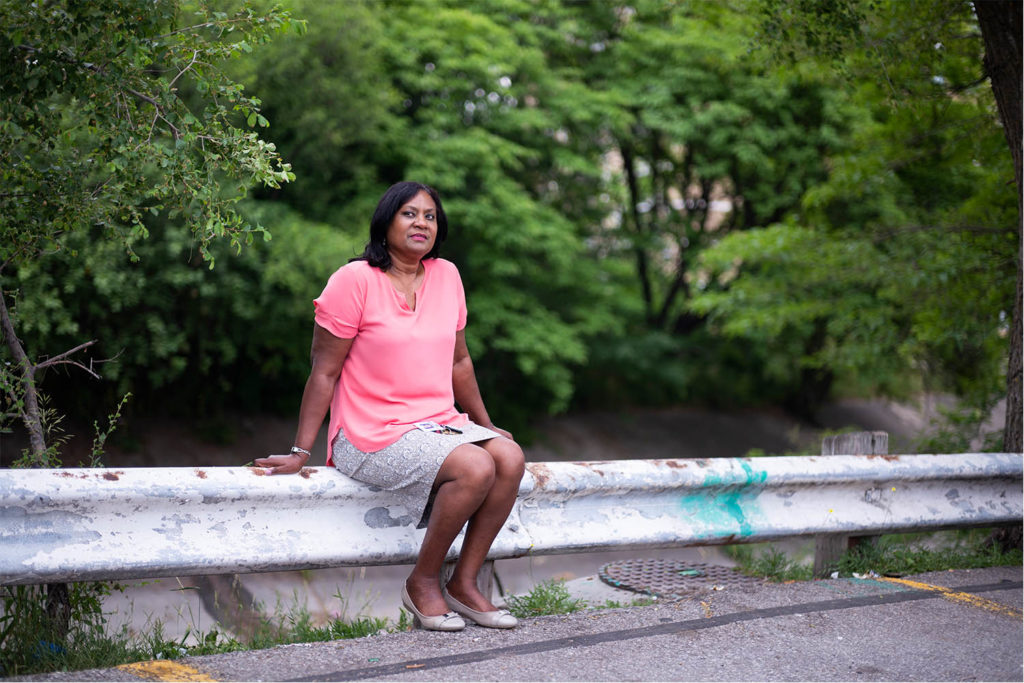
Service providers in the community feel a sense of frustration at the lack of infrastructure provided to them by government authorities, just as the community feels constantly overlooked. Resources have been allocated to the neighbourhood, but it’s nothing compared to the millions of dollars invested in hospitals, policing, and funding an education system that doesn’t serve this community very well.
But that also deepens the resolve of the people living here.
“This is a community that is used to the stigma,” says Prescod.” They are already stigmatized through poverty by postal code, by NIA designations… We counter that with the resilience of the neighbourhood. With people who care for each other. They work hard. Sometimes they are dealt difficult cards. But they survive.”

